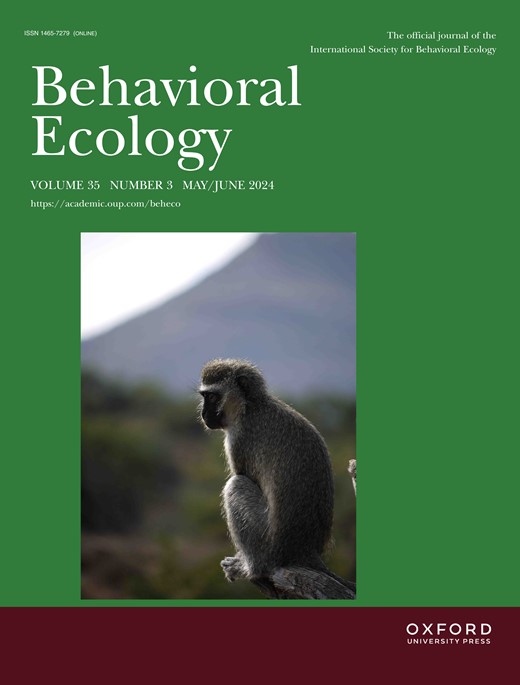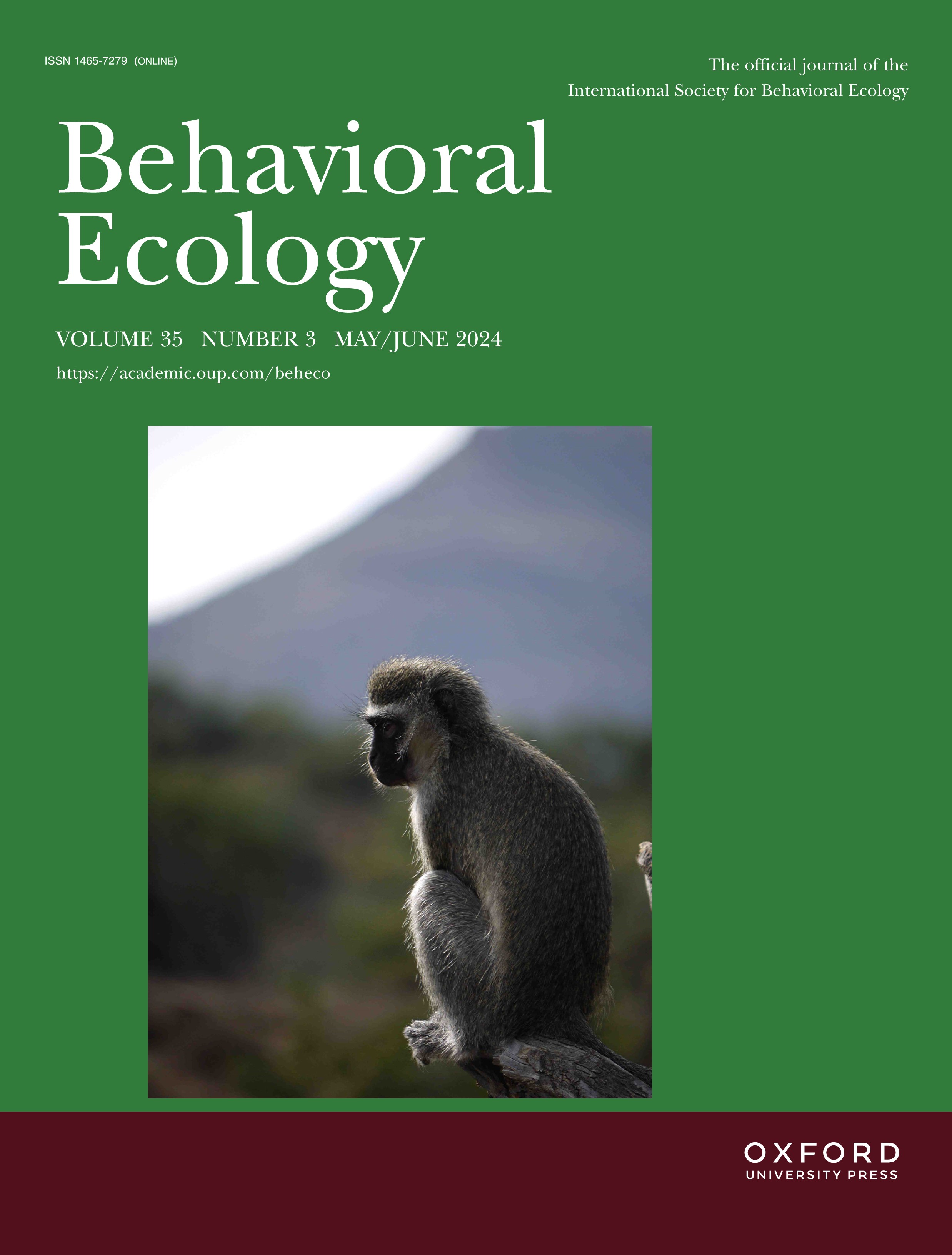Volume 35, Issue 3, May/June 2024
Original Articles
Predator metamorphosis and its consequence for prey risk assessment
Wood frog tadpoles can generalize learned antipredator responses across the life stages of some predator species but not all. When individuals were conditioned to recognize the odor of larval or adult predacious diving beetles as risky, they subsequently showed antipredator response to the odor of both life stages. However, tadpoles did not generalize their learned responses across the life stages of the tiger salamander.
Effects of early predation and social cues on the relationship between laterality and personality
Our latest study shows that laterality and personality are linked, regardless of early environment conditions. By manipulating predation and social environment, we influenced the degree of both laterality and personality, while the correlation between them was not affected. Short-term context seems to be more important in influencing the relationship between laterality and personality than early development.
Dietary tryptophan affects group behavior in a social bird
Sex-dependent audience effect in foraging guppies
Exploring how guppies react to being watched while they eat, our research finds that their foraging behaviour changes based on the presence and type of audience nearby. Both male and female guppies eat more quickly in the presence of an audience, showing unique responses to different group compositions. This study reveals intriguing social dynamics in fish, highlighting how their interactions may affect basic survival behaviours like eating.
The matador bug’s elaborate flags deter avian predators
We provide the first anti-predator test of elaborate hindleg flags in leaf-footed bugs (Coreidae). Flags were not necessary for bird predators to identify coreids as unpalatable, but did deter birds from attacking otherwise readily eaten crickets. This elaborate trait was likely shaped by different forces than other members of Coreidae. Understanding whether complex, conspicuous animal body parts have evolved in response to natural or sexual selection can offer important insight and lead to different evolutionary predictions.
Sex-specific nest attendance rhythm and foraging habitat use in a colony-breeding waterbird
The rhythm of nest attendance is not shaped by the spatial and temporal availability of foraging habitats in Eurasian spoonbills, a sexually size-dimorphic colony-breeding waterbird. Females attend the nest at night and males during the day, while the rhythm of nearby foraging opportunities follows a tidal cycle. That males forage in different and more distant habitats than females is most likely explained by size-dependent foraging techniques, not by the rhythm of nest attendance.
With or without you: gut microbiota does not predict aggregation behavior in European earwig females
Gut microbes do not explain why some females are solitary and others gregarious in the European earwig. While a growing body of research reports a link between gut microbiota and host sociality, we found no differences in the gut microbiota of female earwigs with naturally high or low levels of aggregation behavior. Their gut microbiota was also independent of other behaviors, whereas it was associated with female body condition.
Small-scale land-use change effects on breeding success in a desert-living social bird
For desert specialists, urban expansion of settlements and agriculture in their desert habitat initially may seem to provide an oasis of resources in an otherwise stark environment, but looks can be deceiving. Using direct observations of nests in a mosaic of habitat types, we show that nesting in villages provides no benefits to breeding success in a cooperative desert-specialist bird, despite the apparent increase in available resources.
A variance-partitioning approach for assessing mate choice and which sex controls mating behavior
Cognitive flexibility in a generalist raptor: a comparative analysis along an urbanization gradient
In highly urbanized environments, generalist predatory birds enjoy enhanced adaptability in adjusting their behavioral responses to changing situations, coupled with a reduced neophobia. We found that city-dwelling chimangos exhibited the least neophobia and excelled in reversal learning tests when compared to their counterparts in less urbanized settings. Notably, the effect of neophobia on reversal learning was significant in individuals with elevated levels of this trait, a trend consistently observed among rural and suburban chimangos.
Vibrating aggression: spider males perform an unusual assessment strategy during contest displays
During a contest, rivals may decide to keep fighting or run away. To reach a decision, each rival may use its own fighting capacity or compare its strength with its rival. We investigated fights between males of an orb-web spider to show that the decision to withdraw in the initial contest phase depends mostly on the opponent fighting capacity, indicating that rivals may use one between two unusual fighting strategies.
Social complexity affects cognitive abilities but not brain structure in a Poeciliid fish
Limited evidence of biased offspring sex allocation in a cavity-nesting conspecific brood parasite
If you might compete with your daughters for limited nest sites, should you produce sons instead? Many female mammals do, but female wood ducks apparently don’t. As conspecific brood parasites that lay eggs in their own and others’ nests, female wood ducks might experience mother-daughter competition differently: even if many nests are occupied, daughters might be able to lay eggs in mothers’ and others’ nests as parasites, so mothers don’t shift to sons.
Invited Review
Sexual selection: competition for resources provided by mating partners
Sexual selection theory is a cornerstone of behavioral ecology and evolutionary biology, but 150 years after Darwin’s original conception, researchers are still struggling to find a consensus on what sexual selection actually is. In this review, I discuss various limitations of the gamete-centered definition of sexual selection and propose an alternative one, which defines sexual selection as competition for access to reproductive resources provided by the mating partner.




